These are the types of Switch Mode Power Supply:
- Buck Converter
- Boost Converter
- Buck-Boost Converter
- Flyback Converter
- Forward Converter
1. Buck Converter
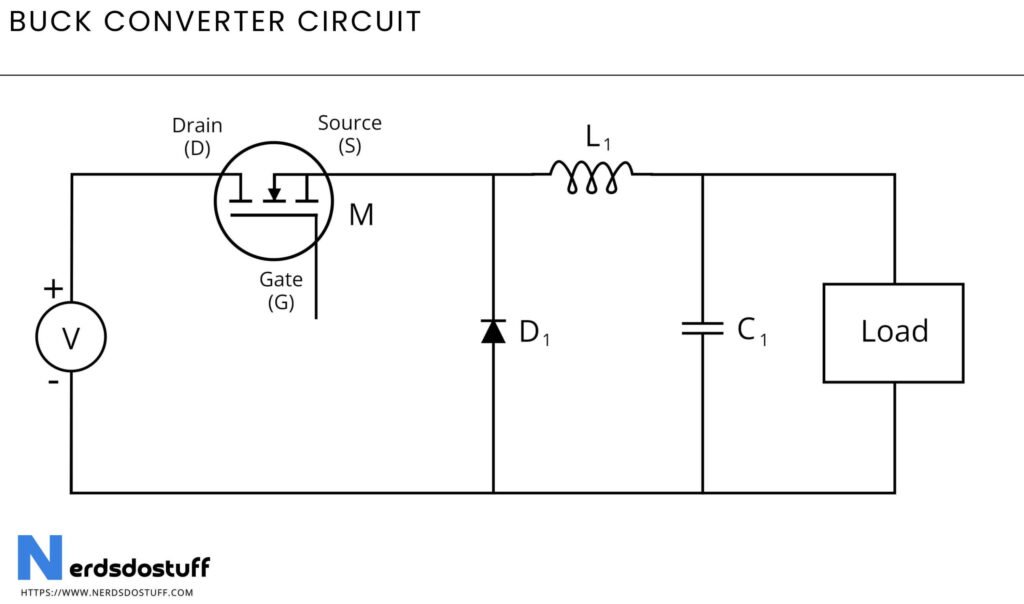
The buck converter, also known as a step-down converter, is a cornerstone in SMPS technology. It excels at efficiently reducing a higher input voltage to a lower output voltage. This is achieved through a cycle of switching the input voltage across an inductor and then swiftly interrupting the current flow. The energy stored in the inductor is then delivered to the output. Buck converters are prized for their simplicity, high efficiency, and suitability for applications such as voltage regulators in portable devices and LED drivers.
2. Boost Converter
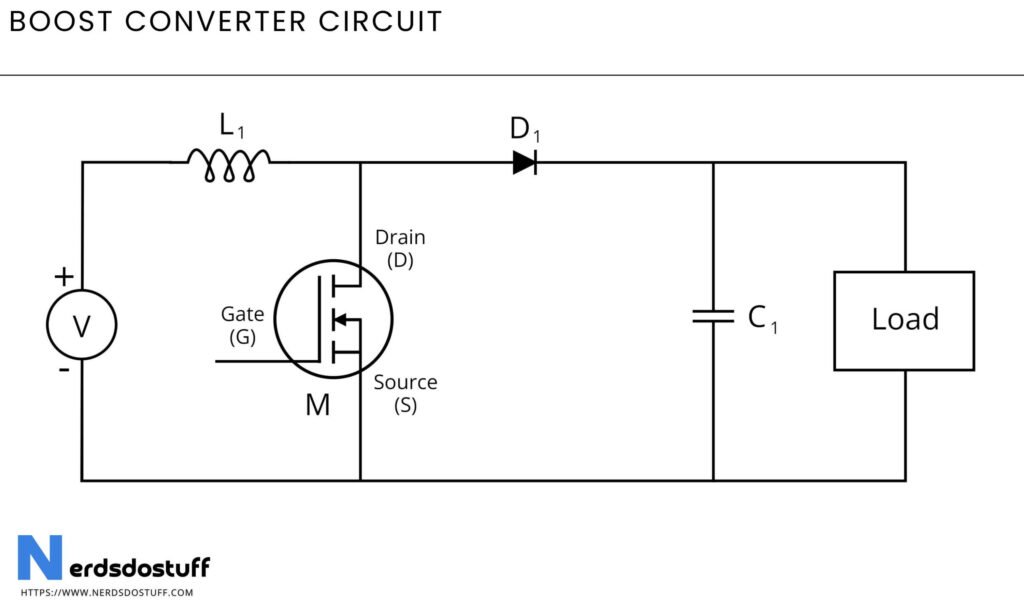
In contrast to the buck converter, the boost converter specializes in stepping up a lower input voltage to a higher output voltage. It operates by storing energy in an inductor during the “on” period of the switching cycle and then releasing it to the output during the “off” period. Boost converters are indispensable in applications requiring higher output voltages than the input, such as in battery-powered systems, where they help maintain stable voltage levels even as the battery discharges.
3. Buck-Boost Converter
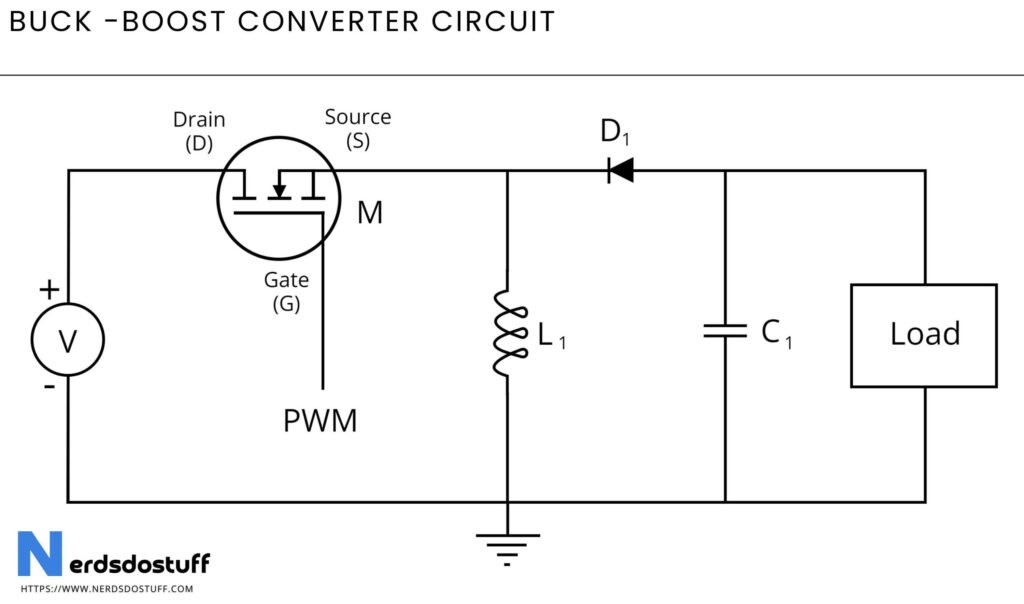
Offering the best of both worlds, the buck-boost converter can both step up and step down the input voltage to deliver a regulated output voltage. This versatility makes it ideal for applications with fluctuating input voltages or where the output voltage may need to be either higher or lower than the input. Buck-boost converters find widespread use in battery chargers, portable electronics, and renewable energy systems.
4. Flyback Converter
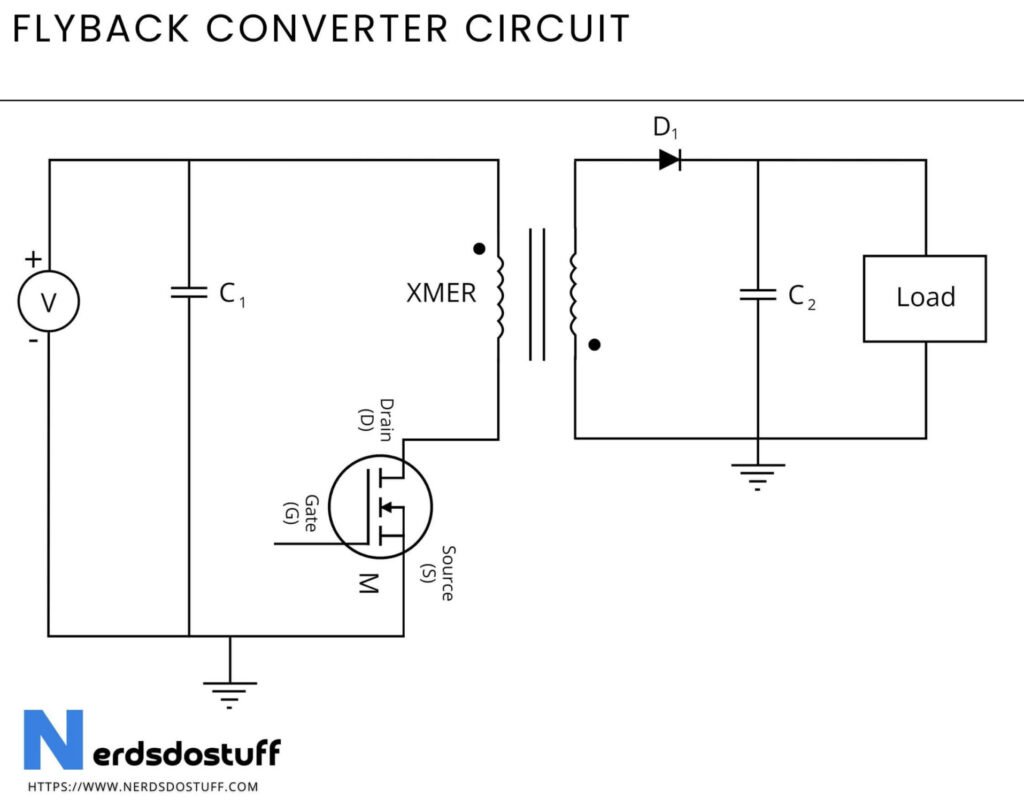
The flyback converter is a versatile isolated SMPS that utilizes a transformer to transfer energy between input and output. During the “on” period of the switching cycle, energy is stored in the transformer’s primary winding. When the switch turns off, the energy is transferred to the secondary winding and then rectified to produce the output voltage. Flyback converters offer advantages such as galvanic isolation between input and output, making them suitable for applications requiring safety and noise immunity, such as in medical devices and telecommunications equipment.
5. Forward Converter
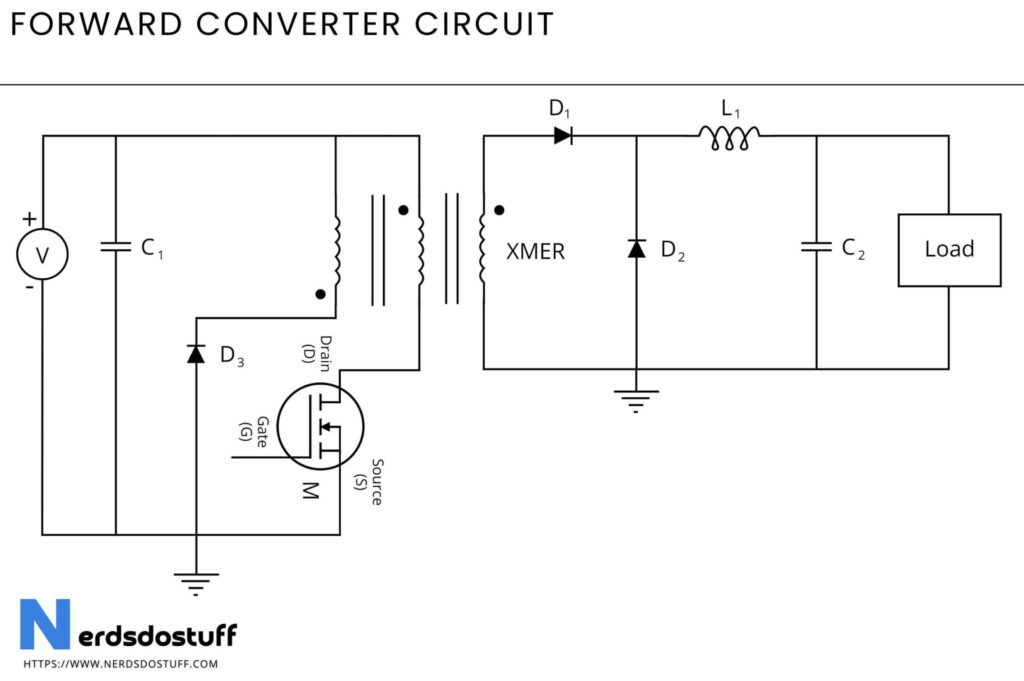
Similar to the flyback converter, the forward converter is an isolated SMPS that employs a transformer for energy transfer. However, unlike the flyback converter, energy transfer in the forward converter occurs only during the “on” period of the switching cycle. This results in improved efficiency and reduced output ripple. Forward converters are commonly found in high-power applications such as server power supplies and industrial equipment.
Difference between different types of converters (SMPSs)
| Feature | Buck Converter | Boost Converter | Buck-Boost Converter | Flyback Converter | Forward Converter |
|---|---|---|---|---|---|
| Input Voltage Range | Higher than output voltage | Lower than output voltage | Wide range | AC or DC | DC |
| Output Voltage Range | Lower than input voltage | Higher than input voltage | Can be higher or lower | Can be higher or lower | Can be higher or lower |
| Voltage Regulation | Step-down | Step-up | Step-up or step-down | Step-up or step-down | Step-up or step-down |
| Efficiency | High | Moderate to high | Moderate | Moderate | Moderate |
| Isolation | Not isolated | Not isolated | Not isolated | Isolated | Isolated |
| Transformer | Not used | Not used | Not used | Used | Used |
| Inductor | Used | Used | Used | Used | Used |
| Applications | Voltage regulators, LED drivers | Battery chargers, LED drivers | Battery chargers, DC-DC converters | Isolated power supplies, battery chargers | High-power applications |




